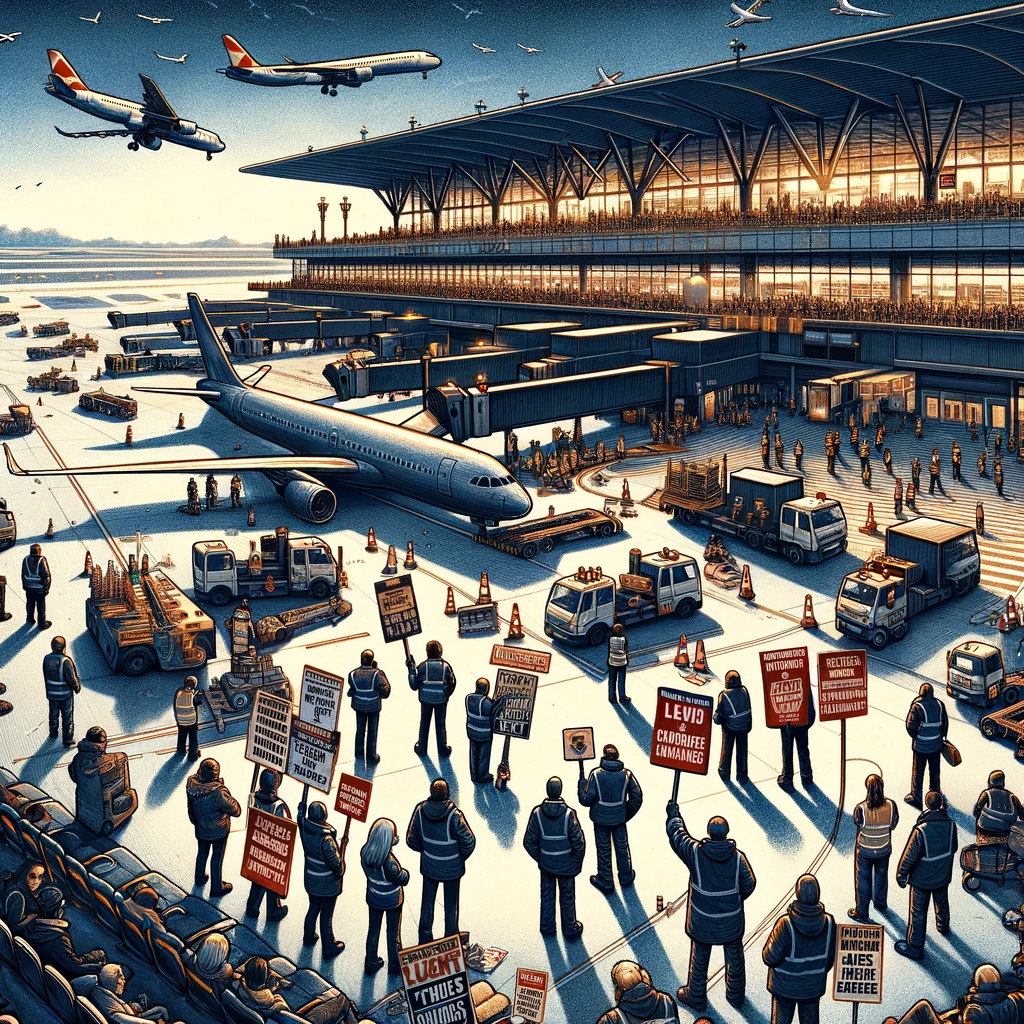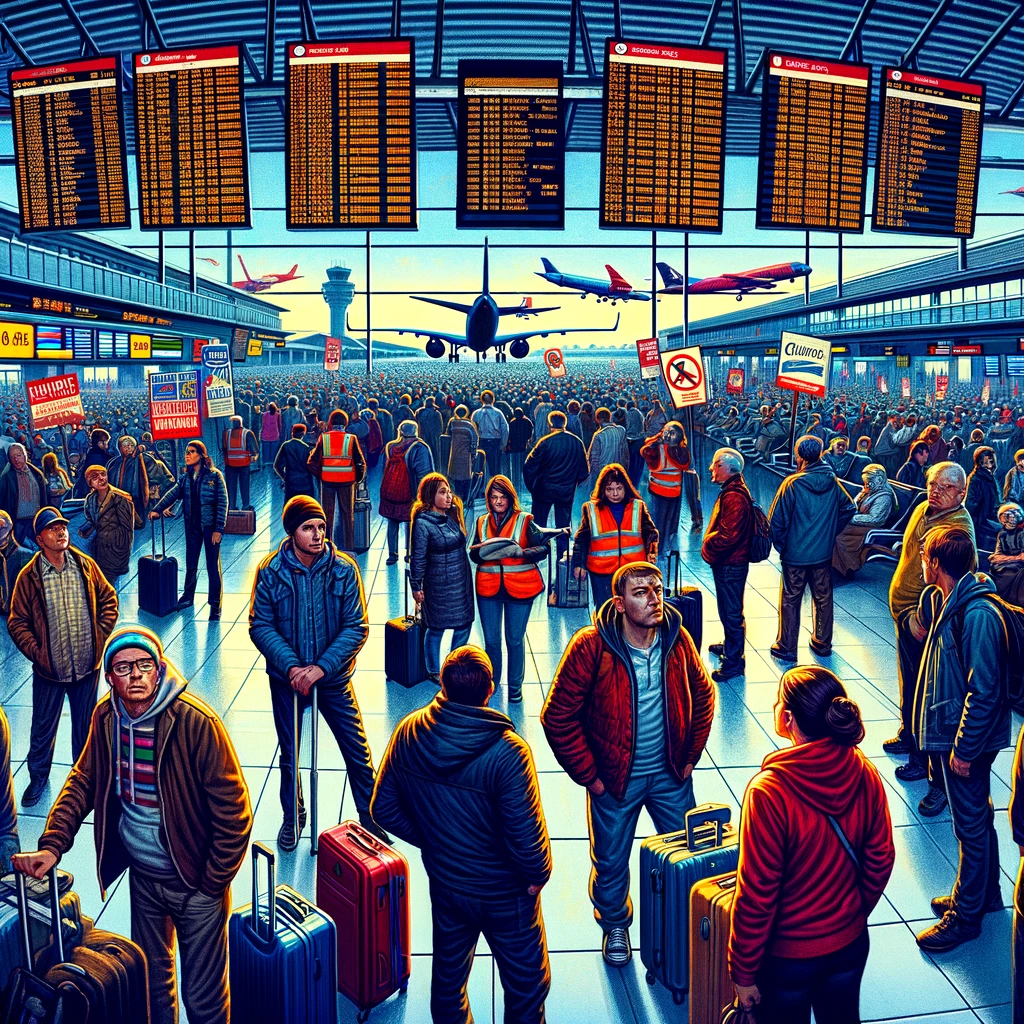Strikes in aviation, whether initiated by pilots, cabin crew, ground staff, or air traffic controllers, present a unique confluence of labor law, aviation regulations, and broader economic considerations. These work stoppages can cause significant disruption to air travel, impacting passengers, airlines, and the global economy. Consequently, a robust legal framework governing aviation strikes is essential to balance the rights of workers to engage in collective action with the public interest in maintaining essential air services.

The right to strike, while recognized in many jurisdictions as a fundamental labor right, is not absolute and is often subject to limitations, particularly in essential services like aviation. International labor standards, such as those promulgated by the International Labour Organization (ILO), provide guidance on the permissible restrictions on the right to strike. These standards emphasize the importance of protecting essential services, where interruptions could endanger the life, personal safety, or health of the whole or part of the population. However, any restrictions imposed must be proportionate and necessary, avoiding a complete prohibition on strike action. Understanding strikes in aviation requires examining both national labor laws and international frameworks that govern industrial action.

To mitigate the disruptive impact of aviation strikes, numerous jurisdictions have established specific legal frameworks regulating industrial action in this sector. These frameworks commonly incorporate key procedural requirements designed to manage and potentially avert strikes:
- Mandatory Strike Notice Periods: Aviation labor laws often mandate lengthy notice periods (e.g., 72 hours, one week, or even longer) before a strike can legally begin. This provides time for negotiation, mediation, and public awareness of potential disruptions. Specific notice periods vary significantly by jurisdiction.
- Dispute Resolution Mechanisms (Mediation & Arbitration): Legal frameworks frequently require or encourage the use of mediation and/or arbitration as mandatory steps prior to strike action. These mechanisms aim to facilitate dialogue and find mutually acceptable solutions, preventing strikes where possible. The effectiveness of these mechanisms depends on their specific design and enforcement in each legal system.
- Restrictions on Strike Timing (Peak Seasons & Major Events): Certain jurisdictions impose legal limitations on when aviation strikes can occur. Prohibitions during peak travel seasons (summer holidays, Christmas) or major international events (Olympics, World Cups) are common to minimize economic and public disruption. The legality and scope of these timing restrictions are often subject to legal challenges and debates regarding worker rights versus public interest.
These legal frameworks demonstrate a global trend towards regulating aviation strikes through procedural means, aiming to balance worker rights with the need to maintain essential air transport services and minimize economic fallout.
A particularly complex aspect of aviation strikes concerns the issue of essential services. Determining which aviation functions constitute essential services is a matter of ongoing debate. While air traffic control is generally considered an essential service, and therefore subject to stricter limitations on strike action, the classification of other aviation roles, such as baggage handlers or check-in staff, is less clear-cut. The legal framework must carefully balance the need to maintain essential air services with the legitimate right of workers in these roles to engage in collective bargaining. The concept of minimum service requirements is often employed to address this balance. These requirements stipulate a minimum level of service that must be maintained during a strike to ensure the continued operation of critical functions, such as emergency medical flights or search and rescue operations.

The legal landscape surrounding aviation strikes also intersects with international aviation agreements and regulations. Strikes affecting air traffic control, for instance, can have cross-border implications, impacting air traffic flow across multiple states. International cooperation and coordination are therefore essential to mitigate the disruptive effects of such strikes. Furthermore, international conventions addressing aviation safety and security may impose limitations on strike action that could jeopardize these critical objectives.
The legal framework governing strikes in aviation is a complex and multifaceted area, requiring a delicate balance between competing interests. While recognizing the fundamental right of workers to engage in collective action, the law must also protect the public interest in maintaining essential air services and minimizing disruption to air travel. As the aviation industry continues to evolve, the legal framework must adapt to address new challenges and ensure a fair and balanced approach to industrial relations in this crucial sector.

